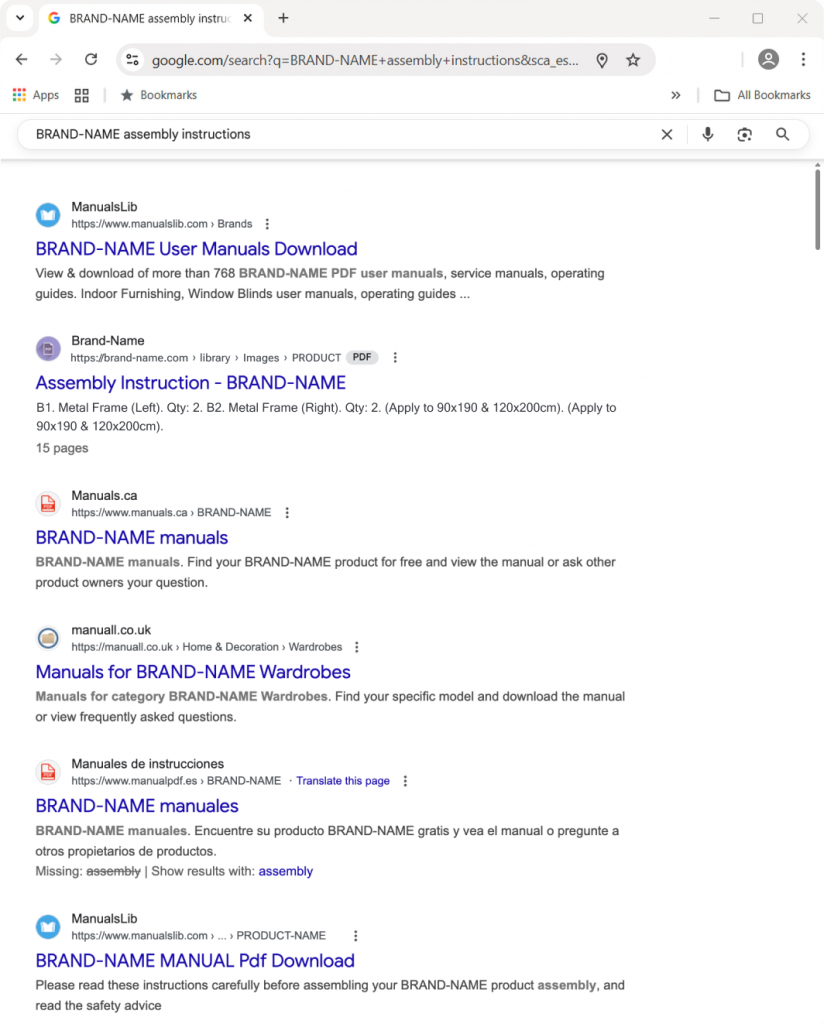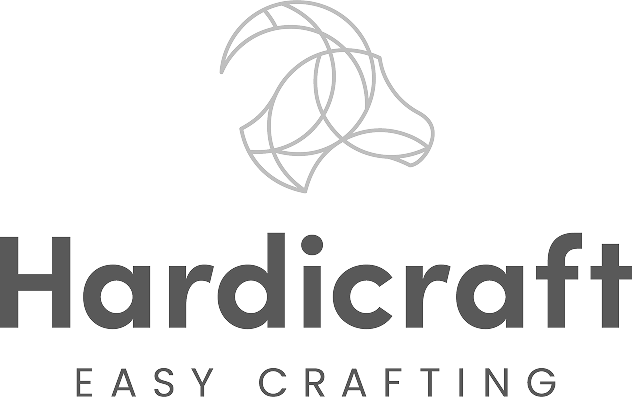The image is of a Google search for the assembly instructions for an international furniture company, we’ve changed their name to BRAND-NAME for the purposes of this article.
Only one result comes from the company itself, a blog post with general advice about how to approach assembling the products, the rest are for instruction download sites, who are less than trustworthy and often charge for instructions download.
Aggregator sites like manua.ls, manualslib.com, and many others have been quietly intruding on your customers’ post-purchase experience, they are the PDF Pirates, robbing your instruction manuals for their benefit.
Losing Control of the Customer Experience
The PDF Pirate sites attract millions of visitors a month by using your brand’s name and your documents:
- When customers land there, they have to get through tacky ads and bad presentation. If they want to download the PDF, they may have to pay, particularly for manuals of older, discontinued products.
- Whether your customer is purchasing for the first time or is consulting the manual for other reasons, it is all happening outside your brand environment, and you have lost control of your message and brand promise.

The SEO and AI Discoverability Gap
Aggregator sites dominate in Google rankings, and they are also positioning themselves for AI-driven search, if only for the fact that they are the best positioned in Google.
- Consumers now ask ChatGPT or brand chatbots for help — “How do I assemble X BRAND-PRODUCT-name”, if your instructions aren’t well-structured, localized, and accessible online, AI will pull from your old PDFs that give inconsistent or inaccurate results.
- With PDFs the AI will only be able to link to the PDF as a document and not to the specific part of the PDF with the specific answer.
- By publishing structured, branded digital instructions, you not only win back Google visibility but you enable your instructions and manuals to be understood better by AI and so get better results for your brand in AI search engines like ChatGPT and even your own AI driven chatbots.
A Missed Opportunity to Build Loyalty
Once a customer opens your instruction page you show them that you have thought of them, it strengthens your brand and from there you can cross sell accessories or related products.
- When the experience is hosted on someone else’s site, that opportunity is lost along with any data and creates a harsh experience for your customer.
The Hidden Cost of Bad Instructions
Poor or outdated instructions create support calls, product returns, and negative reviews.
- Each unnecessary return or complaint is a preventable cost.
- Many brands report 20–35% fewer support calls after changing to clear, mobile-friendly, multilingual instructions; controlled research on furniture-style assemblies shows up to ~50% fewer assembly errors—a key driver of returns.*
Sustainability, Compliance, and Modern Expectations
Digital product instructions are not just about convenience but enable you to meet the rules of modern commerce:
- They’re becoming essential for sustainability and compliance under new regulations like the EU Digital Product Passport and GPSR.
- Hosting your instructions on your domain helps communicate safety updates, eco-design practices, and responsible manufacturing — key values today’s consumers and retailers care about.
- Having your instructions online means that you can update them when things change, ensuring that your customers always get the up-to-date information.
OWN your Post-Purchase Experience
By investing in digital instructions on your domain, you can:
- Regain control of your customer experience
- Win back SEO and AI search visibility
- Lower support and return costs
- Improve brand trust and perception
- Align with sustainability and compliance goals
- Stop enabling the PDF Pirates to put themselves between you and your customers
StepAlong makes it easy for brands to transform their instructions and user manuals into digital experiences that are easy to find, easy to follow, and aligned with your brand identity.
Because instructions aren’t just a technical necessity — they are a powerful brand builder.
*Data from vendor case studies, internal pilot tests, and anecdotal reports across consumer product manufacturers. Results will vary by product complexity, support baseline, and localization level.




